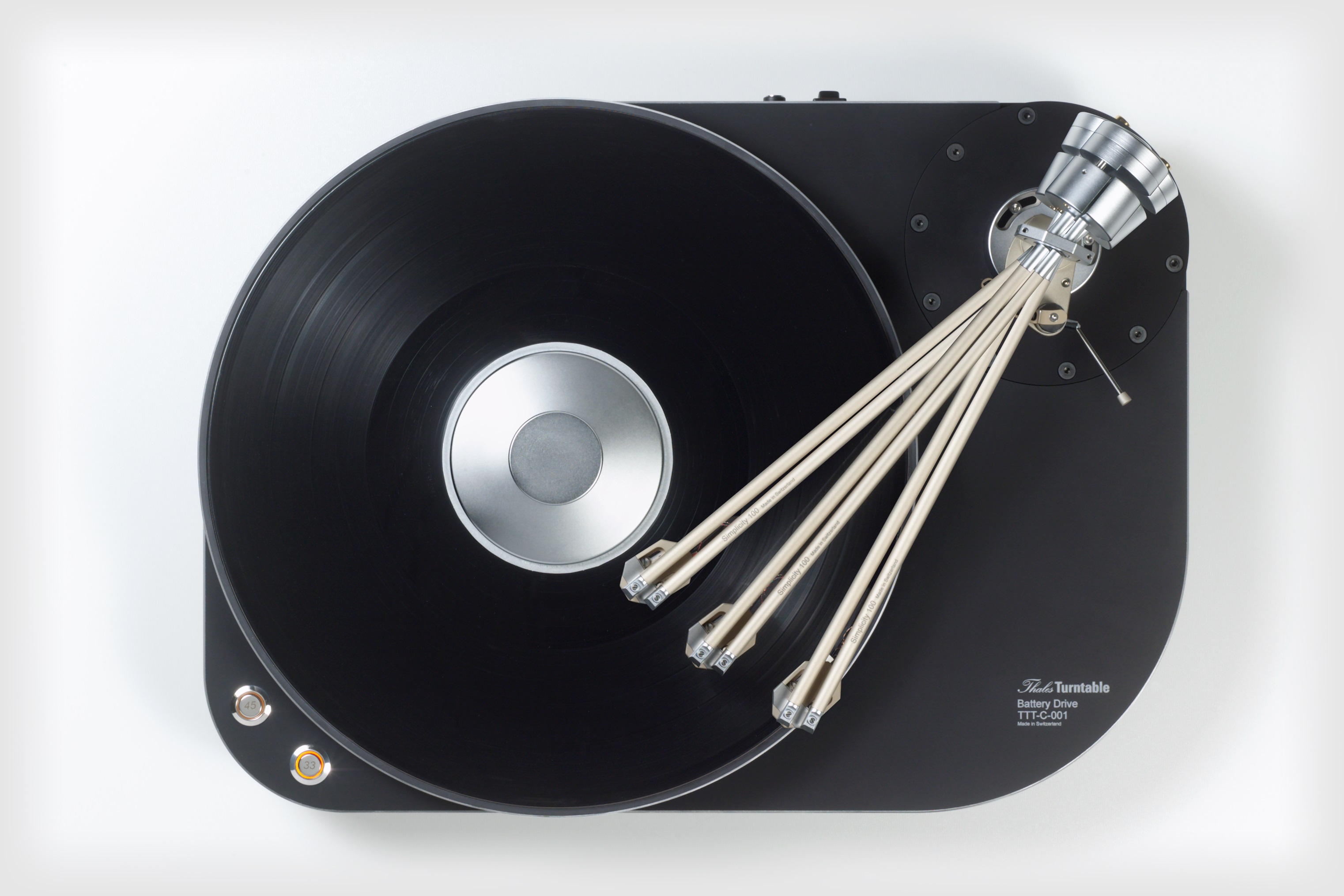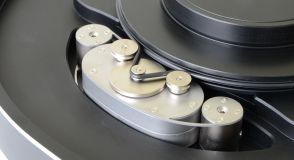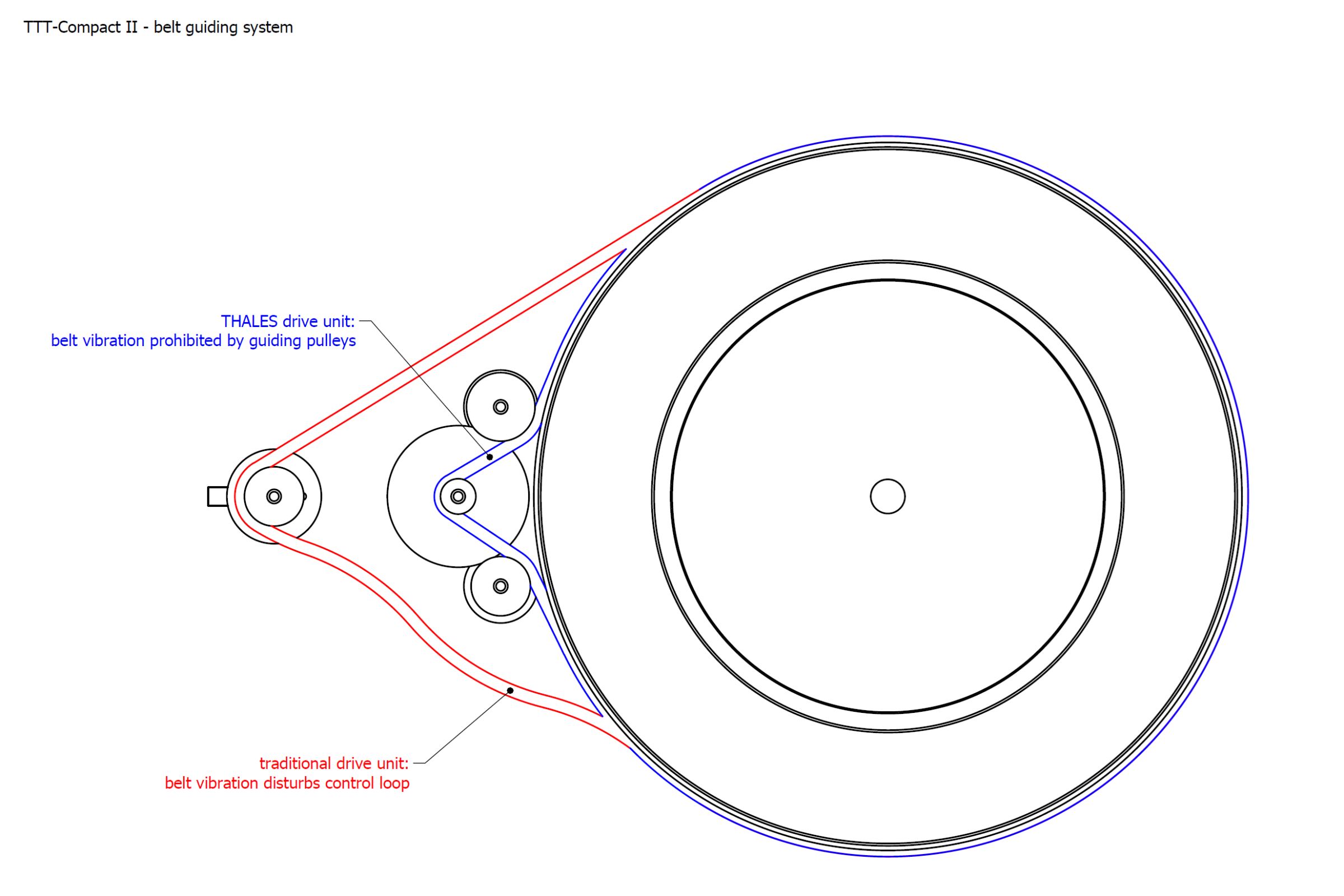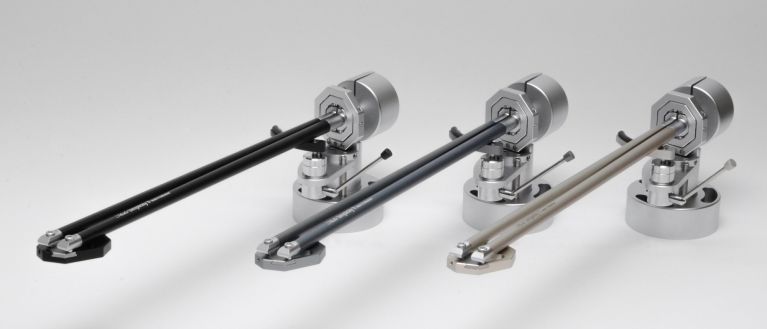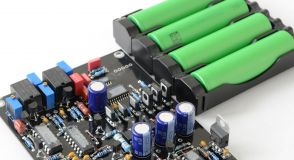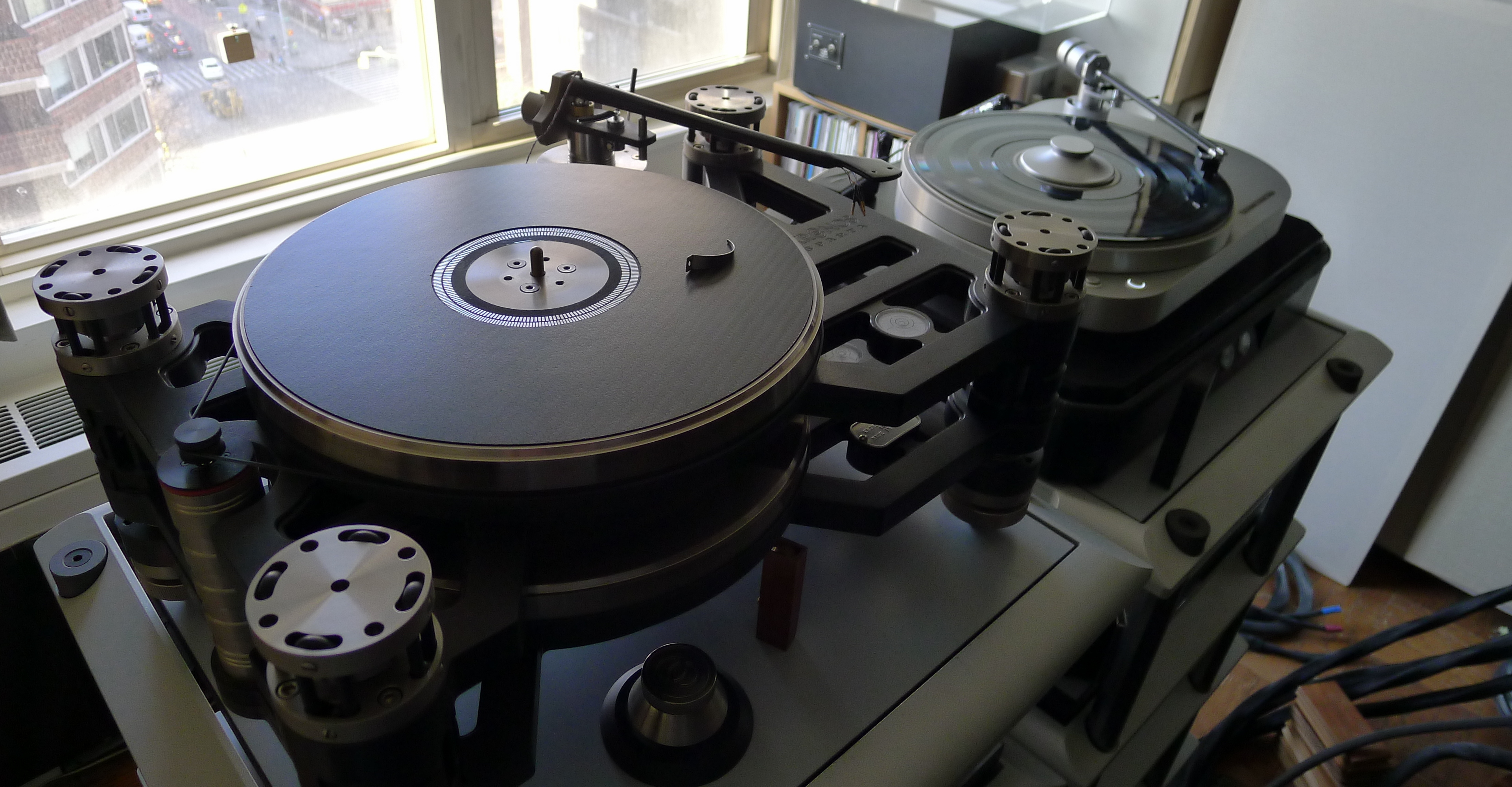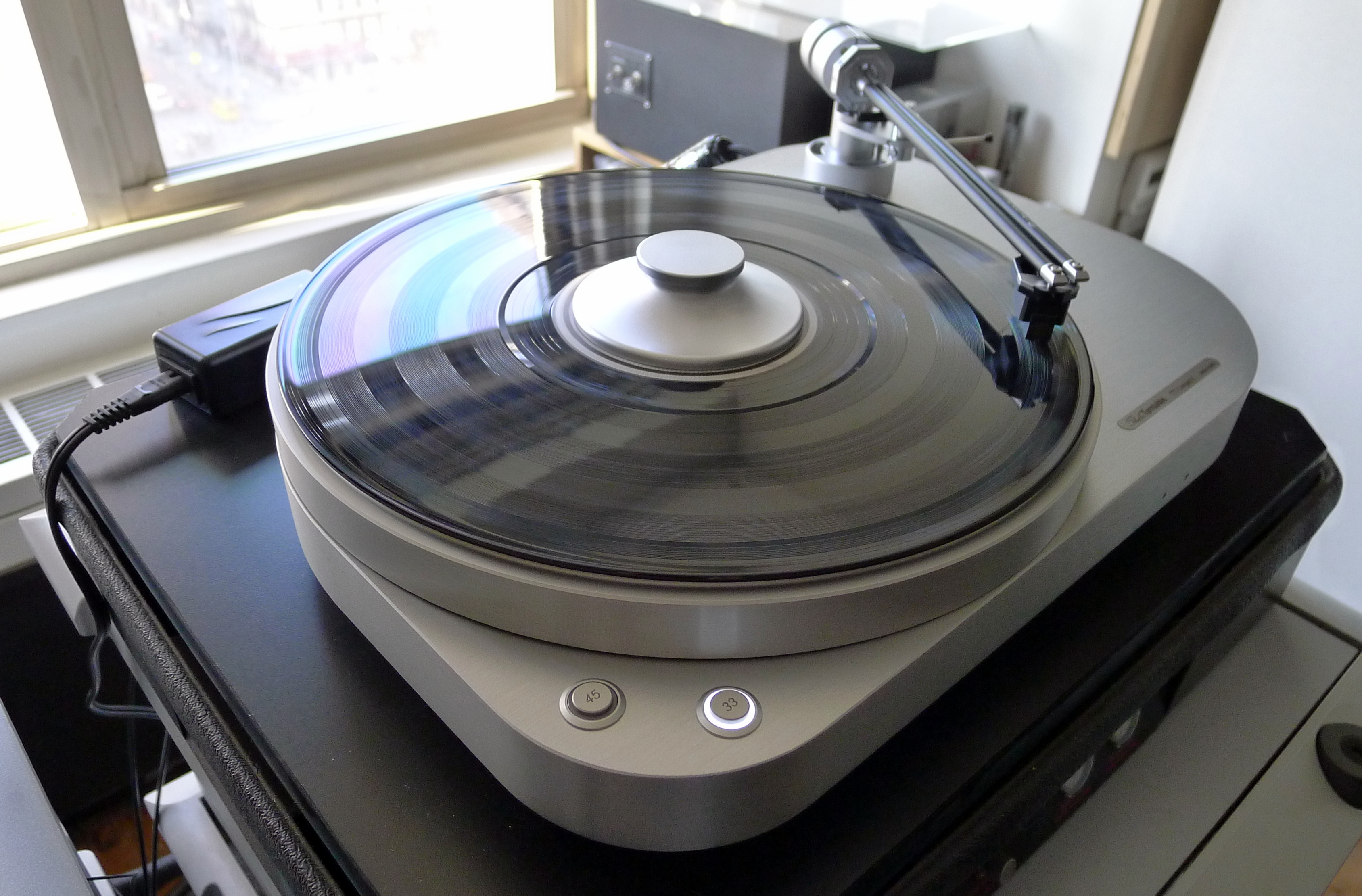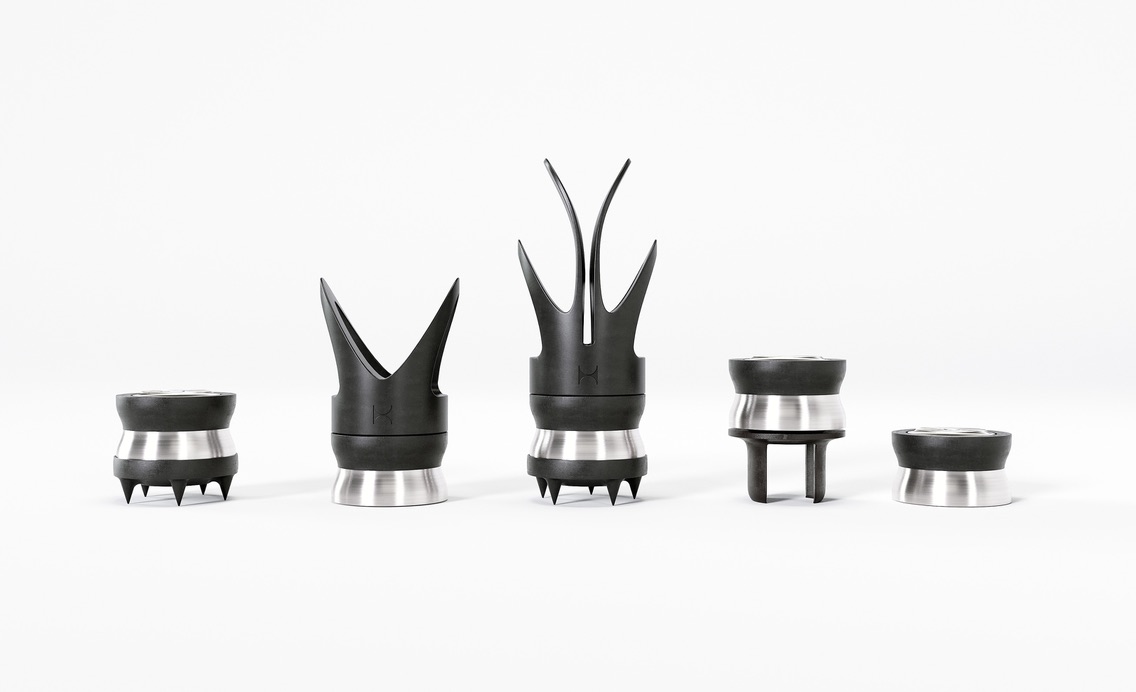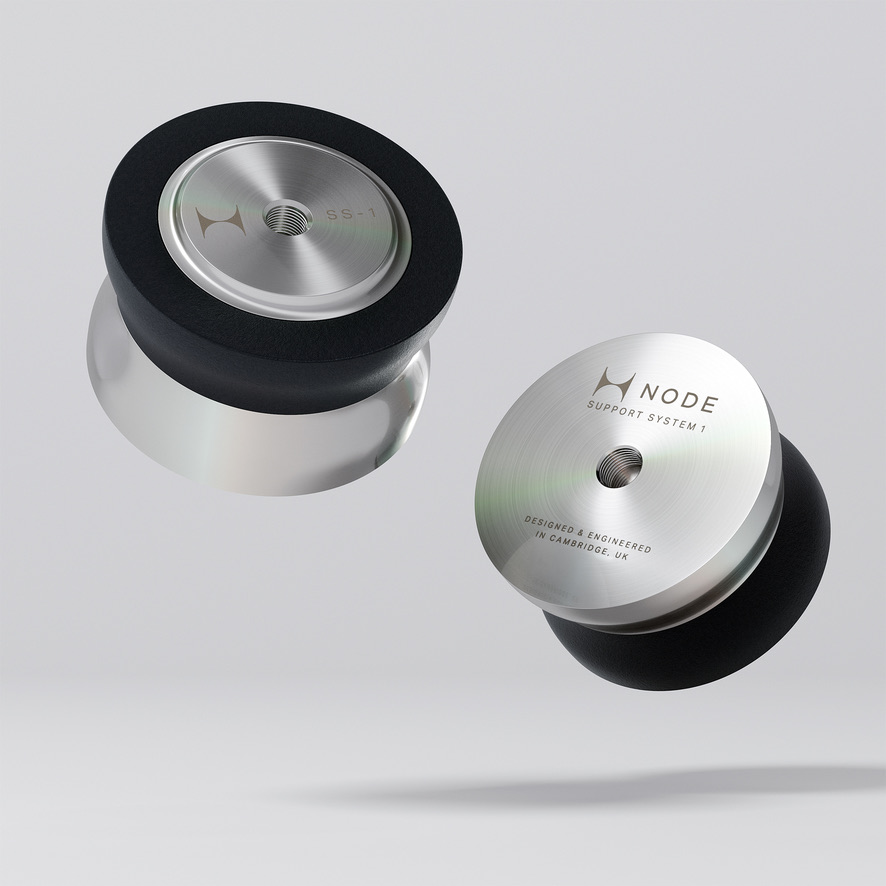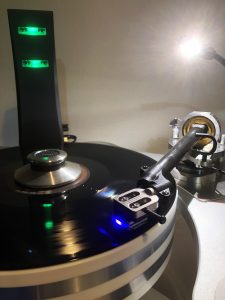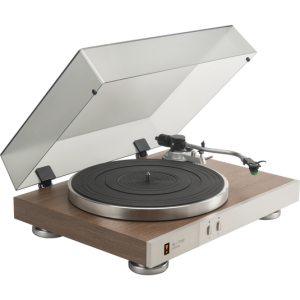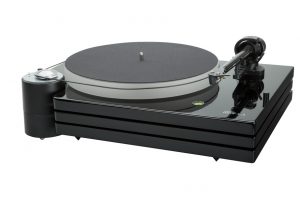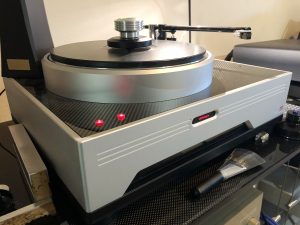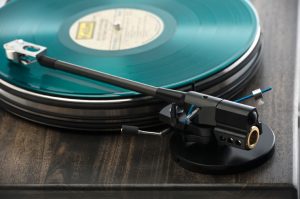From time to time, an item is plucked from the mildewed bins of analog history by one of the reissue houses. Occasionally the dredging action strikes gold; most of the time it would have been best to leave the slumber undisturbed.
A recently unearthed item is Once In Every Life featuring Johnny Hartman accompanied by an old-school rhythm section (Beehive LP, BH 7012). I have an original pressing; the reissue by Acoustic Sounds is garnering tons of buzz. Recorded in 1980, Johnny is well past his prime, still there's no denying his deep baritone has some of the old magic. The production has a mellow, vintage sensibility that you don't hear much these days. The last time I played this LP on my Kronos Sparta turntable I was critical of the singer.
Moving the LP over to the Thales TTT Compact II Turntable with Simplicity II Tonearm and the same Air Tight PC1s cartridge on it, Johnny's slipping and sliding intonation is still clearly an issue. The Thales sculpts the soundstage quite differently from the Kronos. His image is bigger, fatter, and taller, and he is projected forward as if under a spotlight. In fact, his voice is enormous (no doubt a recording artifact).
Direct Connection
If memory serves, all of the turntables I've used with the exception of the Brinkmann Oasis have been belt drives. That's no surprise: they are easily the most popular among audiophiles. The Thales is a belt drive table, but with a difference: in large part, it does not sound like one.
It has really sharp transients and a decay that dissipates fast. If I were to notate how it plays back over time, it would go like: a note arrives quickly—is fully sustained—then decays rapidly. Pause. Then the next arrives—is fully sustained, and so on. Note that pause. The notes progress cleanly over time, demarcated by an infinitesimal separation between them. The fast coming and going—and especially that pause—I associate with direct drive tables.
With the belt drive Kronos my aural notation would be: the note begins—is fully sustained—then starts to decay. Before it's gone, the next one begins. There is no pause. This is the classic belt drive rendering.
Tracking Accuracy
And then there's the Simplicity II Tonearm. The lack of distortion is truly remarkable. From lead-in groove to run-off groove—there is no difference. Instruments at extreme left/right locations are full range and clear as the center image. Playback is clean as a whistle.
How does the Thales achieve these remarkable results? Let's take a look at three major design elements.
1-the TTT Belt-Drive-System
The Thales drive system is an innovative hybrid.
For the TTT, we have realized a drive system combining the advantages of the very traditional idler wheel drive (strength and constancy) with the benefit of the belt drive (silence and decoupling).
As you can see, the Thales drive unit is formidably conceived. The motor shaft is positioned very close to the sub-platter and a short belt is stretched tightly between them. Belts are prone to stretching and typically have lower torque, both of which can impact playback speed.
The short belt is led by two pulleys in such a manner that relative movement of motor and platter is suppressed efficiently. The resulting hard coupling makes the moment of inertia of the high-revving drive unit to become sonically effective.
The two pulleys on either side of the drive shaft keep tension evenly dispersed. When I checked with my KAB Speedstrobe, the TTT displayed less deviation than more traditional belt drive tables. Speed was steady with no symptoms of cogging or wow and flutter. The short belt and the pulleys lend the TTT some of the aspects of an idler drive.
2-the Simplicity II tonearm
The tonearm is the heart and soul of the Thales concept. It is the company's claim to fame.
It all began when Micha Huber [the Thales design engineer] sought for a way to combine the advantages of a conventional pivoted tonearm and those of a linear tangential pick-up arm.
Thales' "tangential" approach uses two separate arm tubes, independently attached to a fixed rear bearing of inner/outer rings and precision micro ball bearings, which determine the pivoting headshell angle, keeping it tangential to the LP groove.
The design is based on the Thales' Circle conceived by the ancient mathematician of that name. The company is named after him.
Some History
Thales' idea for a pivoted arm that can adjust the headshell position as it nears the spindle was realized in 2008. It looked a little…different.
Thales Original tonearm from 2008
From an email Mr. Huber sent me:
There have been two marketable designs with similar approach: the Burne-Jones and Garrard Zero 100. Besides that, there are a couple of dozen solutions which have been applied for a patent but never turned to commercial products. Our real novelty was the tracking-geometry on the Thales circle which was the first pivoted solution being 100% tangential. This allowed us to optimize the Tetragon solution as well, which is used for the Simplicity II.
Both the Burne-Jones tonearm and the Garrard Zero 100 turntable were real products, and the Garrard sold in fair numbers.
Simplicity II tonearm in three colors
The Simplicity II is the latest refinement to Thales "tangential" approach to a pivoted arm. Where a conventional pivoted arm is calibrated to be perfectly tangential to the groove at two points, the Thales design keeps the stylus tangential at all points. The maximum tracking error is claimed to be 0.006°.
3-Battery powered.
The type of power delivered to the motor has sonic consequences, whether from the wall, a battery, or a tube power supply circuit (as found in the Brinkmann RöNt). I have no clue as to why this happens, although I have heard the differences. (Brinkmann even revised the original tubed RöNt into a single ended Class A design, claiming gains in smoothness and transparency. Class A tubed power for your turntable motor? Go figure!)
The TTT-Compact II is fitted with a high-power battery pack and is disconnected from the electrical grid in use. We all know advantages of getting off the grid: noise reduction and purity. Possible concerns are voltage fluctuations as the battery is depleted, resulting in speed instability. The battery supply is well implemented and that was not an issue.
Proof of Concept II
I've always dug Afro-Bossa, with Duke Ellington's Orchestra (Reprise R9-6069), in spite of the fact that I've never heard it play cleanly. Whenever the full brass section kicks in on heavily saturated passages it turns into biting treble distortion. At first I thought the issue was pressing related and I went through many copies. No luck. This LP is a real torture test; I can't imagine it was ever heard properly when it came out in 1963.
Through the Thales, the stage spreads laterally to the max, the width dimension approaching that of the big, mega-buck tables, although depth is modest. The background is noise-free, just the usual analog tics and pops. And guess what? When the full brass enters and the signal is clearly at maximum saturation, it stays shy of distorting.
Proof of Concept III
It's nice to have friends in the business. Joseph, a record dealer and newbie to my listening panel, brought over Music of Berlioz (SXL 2134), with Jean Martinon and the Paris Conservatoire Orchestra, a choice wide-band Decca from 1959. Classical music aficionados talk about how orchestras played differently in the past, in terms of interpretation and the sound of individual instruments. There were distinct French, English, and American schools of oboe playing, for example. You'll hear the regional lingua of French orchestral style on this LP.
What a treat—and another torture test for your cartridge. The very last thing at the end of side one is the finale of Benvenuto Cellini, with a roll by three tuned tympani and one huge bass drum whack.
The tutti passage is scored fff and it is clean. The Thales tracks those inner grooves with aplomb. There is something very special going on with the Simplicity II arm.
Between the direct drive aspects and the lack of distortion, the Thales table generates a certain kind of analog intimacy. You feel there's less mediating between you and the grooves. Or, maybe I should say, the Thales creates a direct connection between your ear and the groove.
This gives it exceptional PRaT. It is the opposite of loggy (musicians' slang for sluggish). If you ever want to witness elderly greybeards engaged in embarrassing foot stomping and head nodding, you should have come on over.
BTW, this is not meant to imply the Thales sounds more real, only that it's faithful to the grooves. We all know what happens during post-production in the recording studio.
The Little Swiss Table that Sounds Bigger than it should
It's called the Compact, but it sure doesn't sound that way. Dynamic range is really fine. The Thales expands with absolutely no sense of compression, giving crescendos a kind of freedom and naturalness that can pass unnoticed.
Furthermore, the wallop delivered won't leave you wanting. Most audiophiles think you need a monster table with a 70 lb. platter and 200 lb. plinth to get satisfying weight and slam. The Thales belies that preconception. This diminutive component is definitely not high mass (the entire package weighs 38 lbs.) You look at it and low-end weight and slam are not the adjectives that come to mind. It's doing what the big boy tables do, except its tone is a little lighter, not as saturated.
Hard Hitting?
Notes move fast with no extra "stuff" in front to blunt the leading edge and nothing behind to prolong the decay. You would think a table with these characteristics would be hard-hitting, maybe even strident. The Thales takes steps to prevent that.
First, the battery power supply reduces grain and artifacts. The transient edge is not rough. Second, the belt in the motor drive acts as a shock-absorber and smooths out the vibrations from the motor. Third, the platter mat and the record clamp inlay are composed of a high-density material from the medical industry with damping properties. Both sides of the record are sandwiched between this material.
The Air Tight PC1-Supreme Arrives
To make life interesting, when I mentioned I would be getting the Air Tight PC1-Supreme cartridge for review, the Thales importer wanted to put it on the Simplicity arm. Hmm. I already had my Air Tight PC1s (MSRP $8500) mounted and thought that was fine. Is it reasonable to put an $11,000 cartridge on a $14,500 table with a $9200 tonearm? I presumed it would be overkill and was skeptical.
To cut to the chase, I'm very glad we did. There were some obstacles to deal with (see Installation Tips below), but when I got the Thales / PC1 Supreme rig fully optimized…Oh, boy! We attained the highest altitude orbit, an extreme level of analog refinement in playback.
This thing is fast! And dynamic as all get out! I was stunned by the vitality of low-level passages and timbres that were remarkably well-developed. The Thales/PC1 Supreme threw the widest, most densely populated, stage I can recall. The front of the room was filled with images that were the same size, but round and sculptural in 3D.
With my best LPs, I was looking at a soundstage that was so explicit as to be startling. The rear wall was carved out so that the stage resembled a square. The rear corners were sighted approximately in line with the front boundaries. I never got that before in my room. This belongs in the category of sounds previously unheard.
The noted direct drive aspect of the motor system was less pronounced, less staccato-like. It made that much of a difference.
Grainless…artifact-less. So pure…so real. The PC1-Supreme is robust, precise, musical. I'll be surveying the PC1-Supreme along with the Air Tight Opus-1 cartridge ($15,000) in a future review.
Installation
The Thales sat on a Vibraplane ELpF active air isolation platform. The MC signal went to my CH Precision P1 phono stage via a Stage III Analord Master phono cable. From that point, TARA Labs The Muse signal wire took over. The Thales is very neutral and benefitted from a warmer power cord on the CH P1 phono downstream, such as the Kubala•Sosna.
The Thales is very easy to set up—except for the cartridge. Calibrating the cartridge on the Simplicity II arm requires a special tool (included with the arm). The importer says it's not hard to do and all his customers do it themselves. He offered to mount the cartridge for me.
The SIMPLICITY II comes with a special tool to make sure the installation is as precise as the manufacturing. The headshell can be removed very easily for exact alignment of the cartridge.
Toggling between 33 1/3 and 45 RPM is done at the push of a button. Similarly, adjustment of the platter's speed is a piece of cake.
A Couple of Installation Tips
The Thales is easy to use. However, extracting maximum performance took some trial and error. Here are a couple of easy (and often overlooked) tips you may find useful.
If your phono stage has grounding options, experiment where you connect the tonearm cables' ground wire. My CH P1 Phono stage has two MC inputs and two ground posts. As I was doing A/B comparisons with my Kronos, I had both connected. The Thales did not like a second ground wire or its phono cable connected to the CH P1's second input. It wasn't a matter of ground noise—there was none. It just sounded better when the second table was completely disconnected.
Another thing was the table occasionally built up a static charge after a few records. So I developed a routine of using a demagnetizer before and after each play. Both of these tips may be situation dependent; you may not experience either of them.
Build Quality
On a visual basis, the Thales is a perfectly formed, compact, and elegant object. Machining is to the highest levels of Swiss manufacturing (this is a firm that also makes Swiss watches). It is so compact it's surprising to read that it contains 170 carefully designed parts.
The batteries are inside the plinth. You plug a small external charging unit into the rear. A full charge takes 4 to 6 hours. The LED on the charger will change from red to green and that will give 12 hours of playtime. A 2-hour charge provides around 5 hours playing time. Disconnect the charger from the plinth when ready to listen.
Conclusion
Epiphanies don't come along every day for analog devotees. I can remember one particular thrill back when I had a linear tracking turntable on the floor. The removal of tracking gremlins promoted a delirious intimacy with the grooves. Note: This is not synonymous with heightened realism, only greater fidelity to the grooves. We all know what sorts of stuff reside there post-studio production.
Thales claim to fame is their tonearm, which aims to marry linear tracking to a pivoted arm. Their latest design is the Simplicity II. Did it give me the thrill? And how! I have never heard such low distortion from a pivoted arm.
The TTT Compact II is their latest turntable. It brilliantly solves the well-known issues facing the medium. Technically a belt drive, the drive system has aspects of an idler drive, so you get that direct drive intimacy but with some smoothing provided by the belt.
With this table/arm combo Thales has realized some very savvy design innovations and put it in a compact, user friendly package that is also beautiful to gaze upon. The TTT Compact II table is very good at its price point. However, the Simplicity II tonearm is beyond that. It is worthy of being mounted on the world's best tables.
TTT Compact II Turntable
Retail: $14,500
Simplicity II Tonearm
Retail: $9200
Thales
Distributor
Aaudio Imports
Parker, CO 80134
303-264-8831




